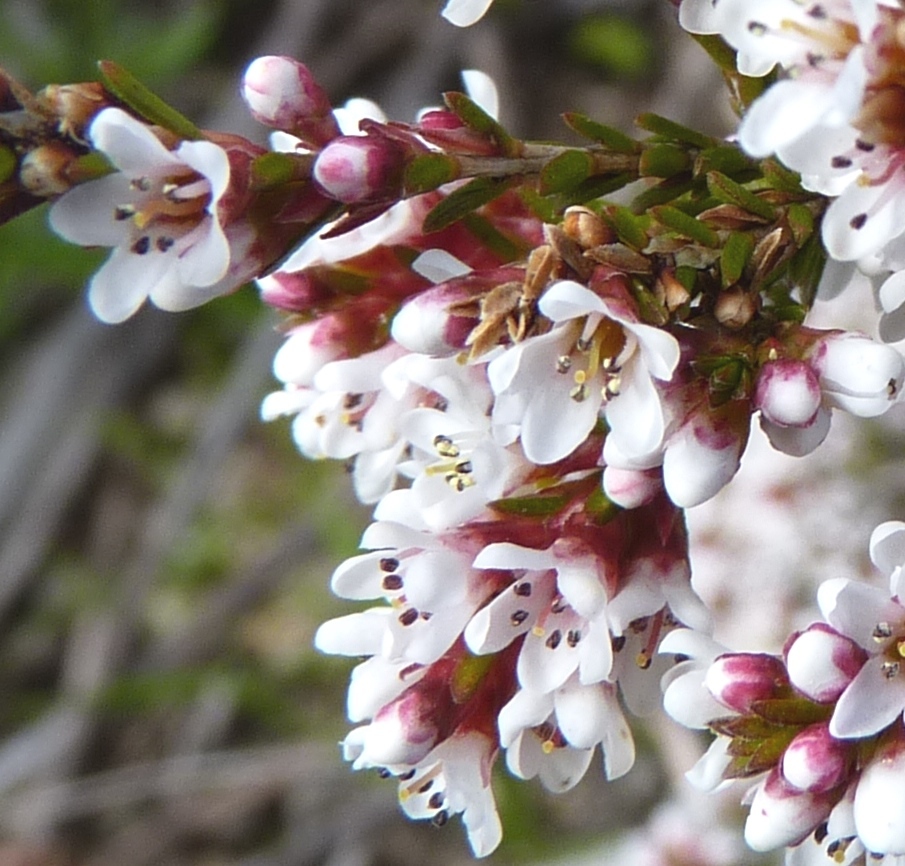
Greek mikros — small, Latin Myrtus — botanical name of the Myrtle.
Shrubs. Leaves opposite, overlapping, small, dotted with oil glands. Flowers axillary, 1-3 together on a common stalk, 5- or 6-parted, white, pink or yellow. Sepals small. Petals free. Stamens same number as petals and opposite them, or twice as many. Ovary of 1 chamber with 2-10 ovules. Fruit an indehiscent nut, not enlarging; seeds mostly 1.
Grown as landscape plants for the fine leaves and attractive flowers.A genus likely to undergo further revision.
M. roseus (Pritz.) Moore has now been placed in Malleostemon roseus (Pritz.) J. Green; it is occasionally cultivated and is a variable shrub from SW WA with pink (rarely white or yellow) flowers. The genus Malleostemon was erected in 1983 and includes 6 species formerly in Thryptomene and Micromyrtus. Malleostemon is characterised by its geniculate (bent like a knee) stamens.
About 32 species Australia-wide.
Seed or cuttings.
Some species are used in floriculture.
Stamens 5 and opposite the petals, or 10 or 12.
Green (1983), Bean (1997a).
Source: (2002). Myrtaceae. In: . Horticultural Flora of South-eastern Australia. Volume 3. Flowering plants. Dicotyledons. Part 2. The identification of garden and cultivated plants. University of New South Wales Press.
